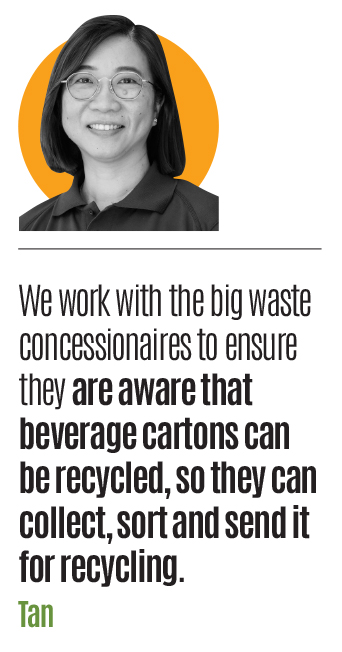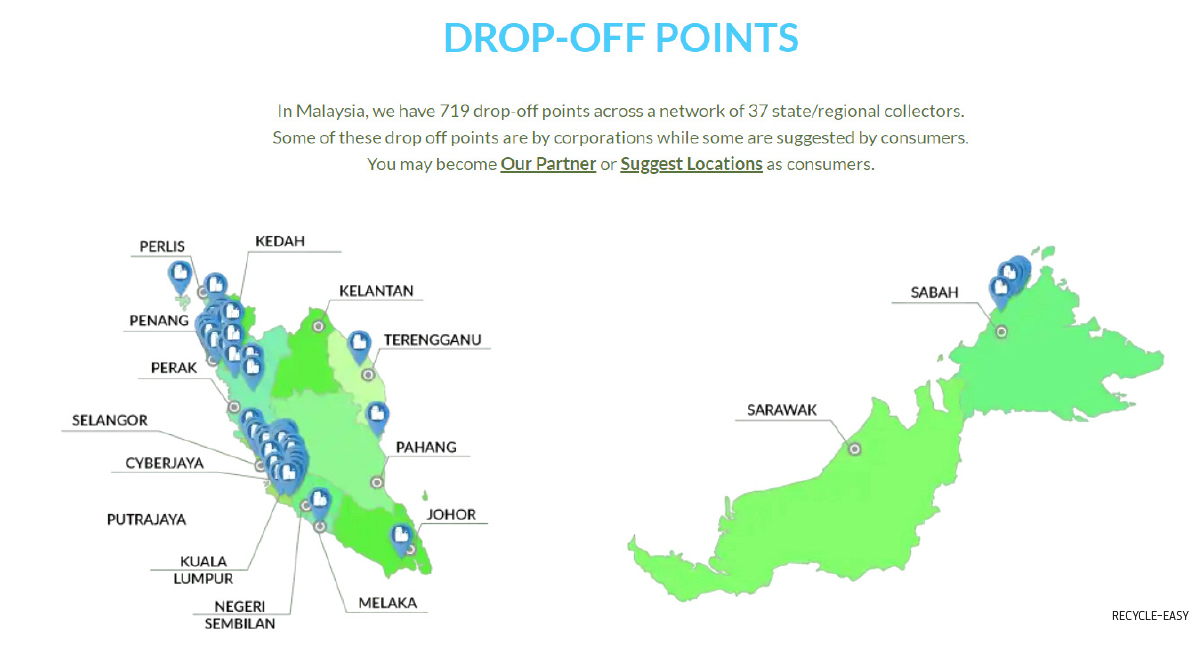
Tetra Pak works with SHA to turn plastic and aluminium from used beverage cartons into panel boards and roofing tiles
This article first appeared in The Edge Malaysia Weekly on June 19, 2023 - June 25, 2023
Many Malaysians may not know that the beverage cartons that hold their favourite fruit juices or milk are recyclable. It could be confusing: Is the carton paper or plastic? Which recycling bin should it go into? Oftentimes, the beverage carton ends up in the rubbish bin, uncleaned and unsorted.
But that becomes a wasted resource. Terrynz Tan, Tetra Pak’s sustainability director for Malaysia, Singapore, Philippines and Indonesia, explains that beverage cartons are made of paper, plastic and aluminium. All paper mills can recycle these cartons with a pulper and turn the material into high-quality paper again.
On the other hand, the plastic and aluminium, which is called polyAl once it has been separated from the paper, can be turned into roofing tiles and panel boards.
Ten years ago, Tetra Pak, which is one of the world’s biggest food packaging and processing companies, began working with waste collectors and paper mills in Malaysia to make this happen. This is especially needed for the processing of polyAl, since not all paper mills have the capability to do so.
Last October, it took a step further and co-invested in a line of products with SHA Hup Aik Sdn Bhd (SHA) to turn the polyAl into high-quality roofing and tiles. These are sold under a brand called Ecopeal.
“This is a commitment that we have to build capacity and improve the recycling capability [of our partners]. We worked with the recycler and co-invested with them to launch a modernised polyAl facility that enhances the quality of the product, so they are able to sell it better and create a stronger demand,” says Tan.
SHA is in the same group of companies as SHA Paper Mill Sdn Bhd, with whom Tetra Pak is collaborating to recycle its beverage cartons. “They want more beverage cartons to come in because they have 70 tonnes of capacity to run it. They love the fibre [from the cartons] because it’s a long, high-quality fibre that can become paper bags and packaging. At the same time, they can recover the polyAl.”
All this is done in alignment with Tetra Pak’s sustainability commitment to ensure its products are designed for recycling and use renewable materials. Currently, its products are 70% paper, and it is introducing bio-based materials to replace plastic and aluminium.
“We already launched the world’s first fully renewable carton a couple of years ago for the chilled distribution portfolio. But we are also constantly looking at other areas where we can increase the renewability content. For example, we now have paper straws, bio-based caps and polymer, which are options available for our customers,” says Tan, who adds that all the components of the packaging are recyclable.
The carton caps used to be made of fossil-based plastic. The bio-based ones are made from sugar cane instead, which Tan says the company is currently obtaining certification to prove that it is responsibly sourced. The recycling process for bio-based material is the same as for plastic, Tan adds.
The tricky part is getting people to recycle
These initiatives address the carbon footprint of the packaging at its production stage. Things get more complicated at its end-of-life stage, where Tetra Pak must rely on consumers to bring the cartons back for recycling.
The recycling rate in Malaysia was 33.17% in 2022, according to the Solid Waste and Public Cleansing Management Corporation. Similarly, the collection of post-consumer cartons in Malaysia for Tetra Pak was 30% last year.
“This is my everyday work and yes, it is still a challenge because it takes a lot to make recycling happen. It takes a very coordinated collaboration to make the value chain work sustainably,” says Tan.
The first task is to increase consumer awareness that used beverage cartons can be recycled. Secondly, there must be a good sorting and collection infrastructure.
“We work with the big waste concessionaires to ensure they are aware that beverage cartons can be recycled, so they can collect, sort and send it for recycling,” says Tan.
They also engage with non-governmental organisations like Tzu Chi and work with schools to set up collection systems. An ongoing programme it has is the CAREton Project with Nestlé Malaysia, through which Tetra Pak has set up collection points in various locations to collect used beverage cartons. Consumers can find these locations via the recycle-easy website.
The CAREton project was initiated so used beverage cartons could be collected as a segregated waste stream without contamination, says Tan. “We are trying to populate the map over time as we have more partners coming onboard … Nestlé Malaysia, our customer, is partnering with several city councils to start a door-to-door collection of recyclables. Tetra Pak is supporting that programme. Consumers can include beverage cartons in that collection.”
Beverage cartons from other companies can also be collected through these channels. “For Tetra Pak, we believe there is a responsibility on our side to invest our resources to make sure recycling happens. That’s the commitment we want to demonstrate as an industry leader,” she says.
Creating a demand for recycled materials
After the used beverage cartons are collected, there must be an incentive to attract recyclers to buy the used cartons from waste collectors. Subsequently, demand for materials made from recycled cartons must be there. Otherwise, the circular economy loop will not be sustainable or economically viable.
“A key success factor for us is to make sure there is a buyer and user for the materials to create demand. We have been putting a lot of effort into identifying paper mill partners who may be interested in used beverage cartons as raw materials,” says Tan.
That’s why Tetra Pak is working with the SHA Paper Mill to recycle beverage cartons and with SHA to give the used polyAl a second life.
“Once we have this recycler, we connect all the collectors to it. When we talk to waste management companies and other organisations, we can tell them that this paper mill is going to buy [the used] cartons from them,” says Tan.
Her mission is to continue to strengthen these collaborations and increase the collection and recycling rates of beverage cartons.
“Our plan is to see how we can continue to expand the recycling capacity ... The two main directions are to make our packages designed for recycling and improve the way our packages perform in the recycling stream. The other is to increase the renewable profile of our packaging,” says Tan.
Save by subscribing to us for your print and/or digital copy.
P/S: The Edge is also available on Apple's App Store and Android's Google Play.
- NationGate loses RM1.62 bil market cap in six trading days as it drops to 17-month low
- Lim Seong Hai Capital secures 20-year concession to operate KL Tower, starts April 1
- JF Technology in RM6 mil probe card manufacturer acquisition
- Sapura Resources alleges conflict of interest against ex-MD Shahriman
- Nasdaq falls over 3% to six-month low on growth concerns
- US stocks tumble, Nasdaq just had its worst day since 2022
- Blazing tanker spills jet fuel after accident off UK coast
- Loke reminds operators to ensure commercial vehicles are safe for use
- Ministry has identified 21 locations to be developed as unity sites — Aaron
- Nasdaq falls over 3% to six-month low on growth concerns


